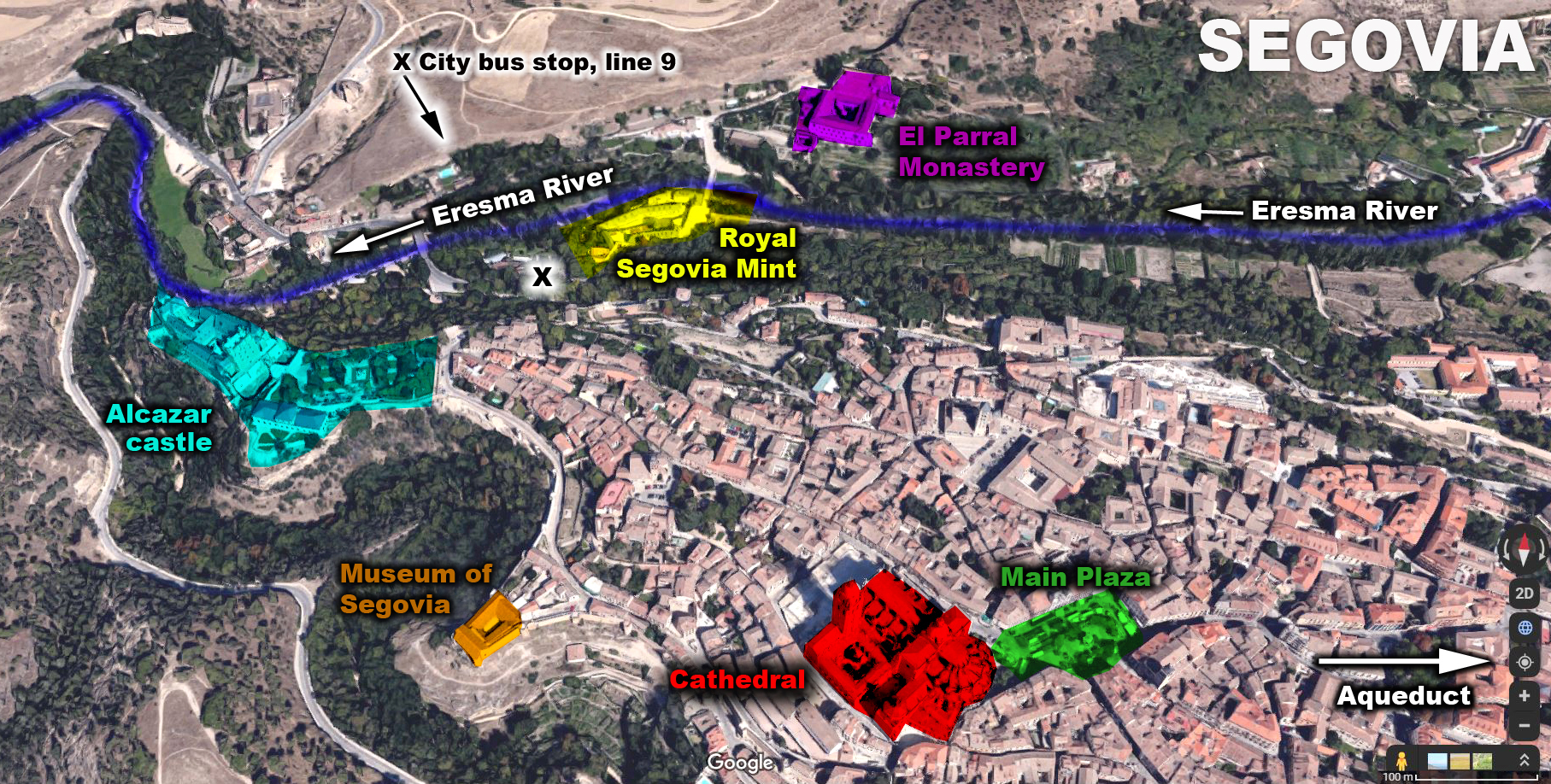Visit the Segovia Mint
How to get there

How to visit
We recommend that you first visit the three patios, and afterwards, visit inside the buildings, following the production flow route we describe below. Click on links to see images of the TECHNOLOGY used in each building, or MONUMENT for historic photos and restoration of each building.
INTRINSIC OPERATIONS. The pack mules laden with big silver bars enter the Mint through the monumental doorway, passing through security and head for the WEIGHING office. All silver which enters the factory is carefully weighed while the assayer checks the fineness of each bar in the ASSAY office. Later, the treasurer passes the silver bars to the founder, who prepares the melt, forming the alloys in the FOUNDRY. Added to the crucibles are SCRAPS AND SWEEPINGS from previous batches. The founder then passes the ingots he has made to the treasurer. This concludes the first process of minting coins, all taking place in the buildings on the upper patio level.
EXTRINSIC OPERATIONS. The treasurer later passes the silver ingots to the 'coin master', who supervises the formation of the coins in the buildings on the lower patio level. First comes METAL ROLLING where the ingots are stretched and flattened between rollers, and then pulled through the DRAW BENCH. When metal is worked, it hardens, so it is softened frequently in the ANNEALING furnace. This operation blackens the metal, which then is cleaned in an acetic bath in the BLANCHING room. In this Mint, coins are struck by the ROLLING method, SCREW PRESS or AUTOMATIC PRESS depending on the advances of each era. Coins produced with roller-dies are later punched from the strips in the CUTTING room. Using the later techniques, blanks are first cut from the strips, and then struck into coin on the presses with flat dies. Starting in 1721, an EDGE MILLING is applied to the edges of the coin. Two support departments for this process are the ENGRAVING OFFICE where the dies are engraved, and the SMITHY, where the steel rollers and dies are produced. The finished coins are then turned over to the treasurer, who formalizes the issuance of the coinage.

The technology 
I. Roller mill coining - J. Screw press coininge - K. Screw press coining - L. Blanking or cutting
M. Edge milling - N. Engraving office - O. Smithy
The monument 
UNIQUE MONUMENTAL IMPORTANCE
THE RESTORATION PROJECT
PRODUCTION FLOW DIAGRAM
SECURITY
1. Monumental entrance
2. Side door
3. Guard and security
4. Jail
INTRINSIC PROCESSES (upper patio)
5. Foundry
6. Treasury, scales and assay offices
EXTRINSIC PROCESSES (lower patio)
7. Big mill building
8. Small mill building
9. Annealing and blanching ovens (not restored)
10. Screw press building (not restored)
OTHER PARTS OF THE MONUMENTAL COMPLEX
11. Bridge, stairs and fountain
12. Retaining wall
13. Flour mill (ruins)
14. Carpentry and treasurer’s living quarters
15. The Mint’s Garden
16. Fishing pavillion
17. Four Mint garden patches
